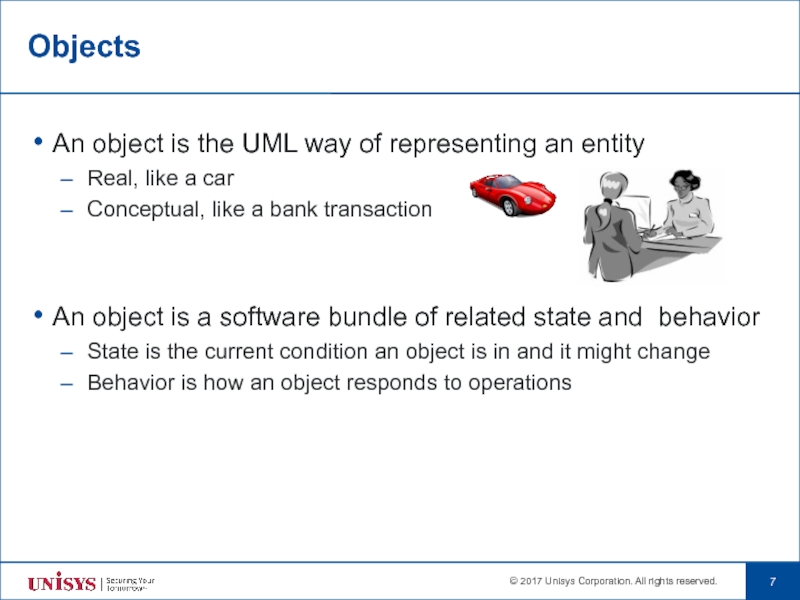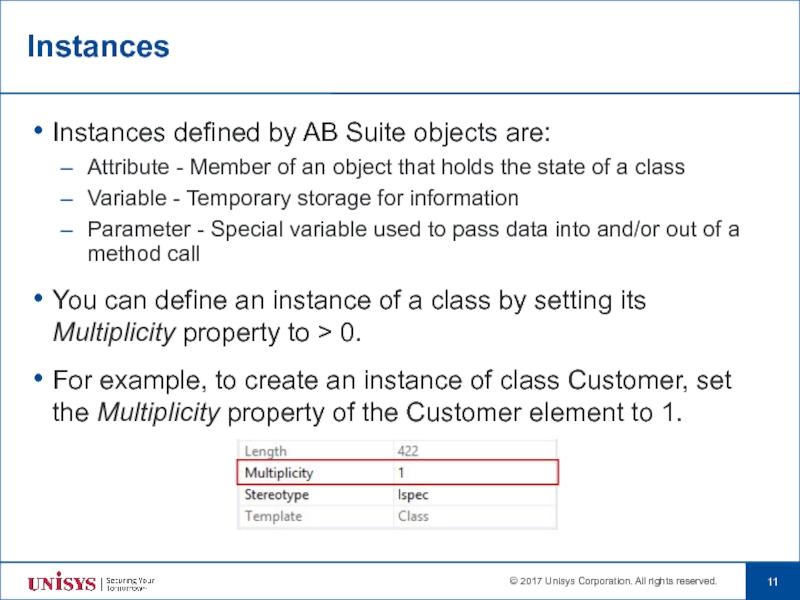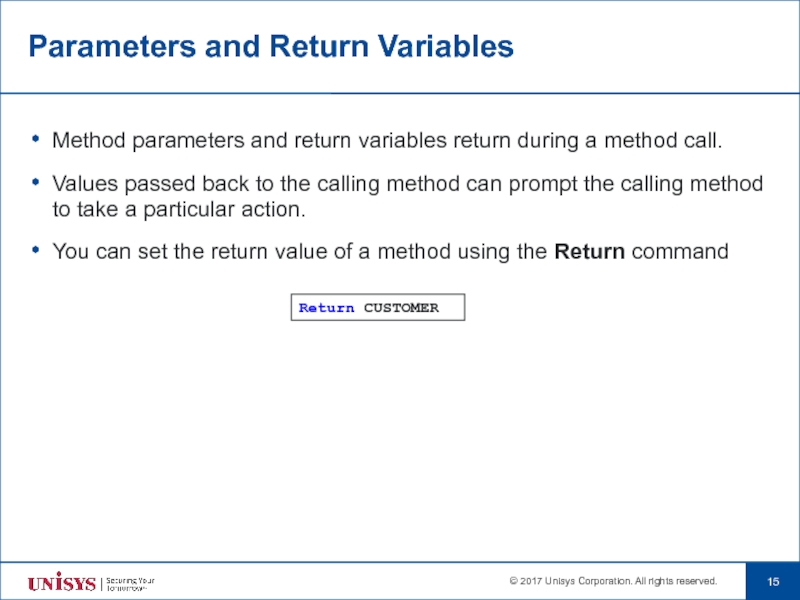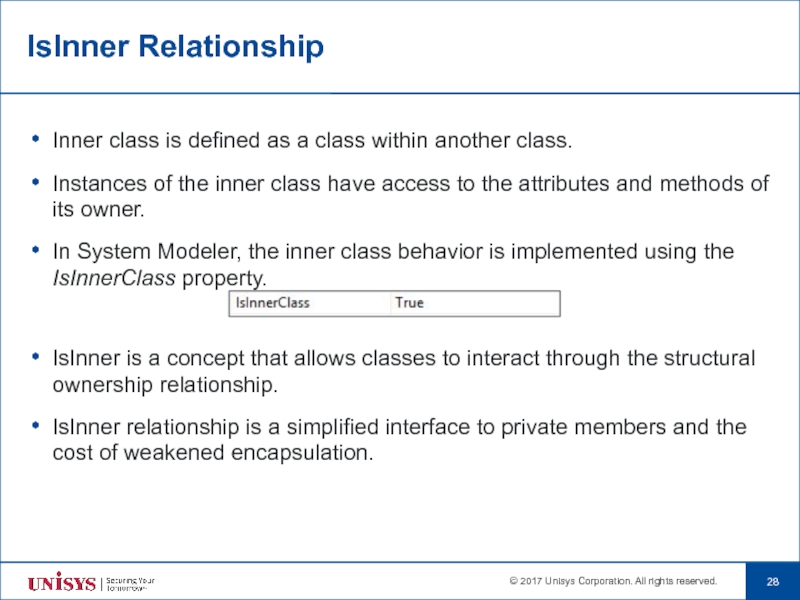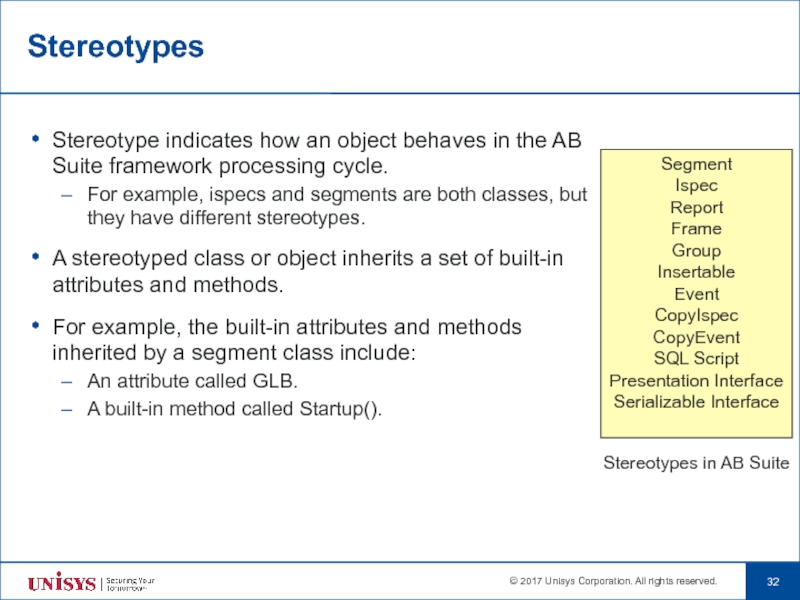- Главная
- Разное
- Дизайн
- Бизнес и предпринимательство
- Аналитика
- Образование
- Развлечения
- Красота и здоровье
- Финансы
- Государство
- Путешествия
- Спорт
- Недвижимость
- Армия
- Графика
- Культурология
- Еда и кулинария
- Лингвистика
- Английский язык
- Астрономия
- Алгебра
- Биология
- География
- Детские презентации
- Информатика
- История
- Литература
- Маркетинг
- Математика
- Медицина
- Менеджмент
- Музыка
- МХК
- Немецкий язык
- ОБЖ
- Обществознание
- Окружающий мир
- Педагогика
- Русский язык
- Технология
- Физика
- Философия
- Химия
- Шаблоны, картинки для презентаций
- Экология
- Экономика
- Юриспруденция
Object-Oriented Concepts in AB Suite презентация
Содержание
- 1. Object-Oriented Concepts in AB Suite
- 2. Objective By the end of this module,
- 3. Module Topics Object-Oriented Concepts—An Overview History of
- 4. Object-Oriented Concepts—An Overview
- 5. History of Object-Orientation Object-Orientation (OO): Developed at
- 6. Some Key Object Oriented Principles
- 7. Objects An object is the UML way
- 8. AB Suite Objects
- 9. Classes A class acts as a blueprint
- 10. Class Types Primitive class — Is an
- 11. Instances Instances defined by AB Suite objects
- 12. Current Instance Current Instance is the particular
- 13. Example Consider that the CUST ispec contains
- 14. Methods Methods contain logic that defines the
- 15. Parameters and Return Variables Method parameters and
- 16. Method Logic Method Logic defines the behavior
- 17. Principles of Object Orientation
- 18. Encapsulation Encapsulation is also known as information
- 19. Example Business Rule: A Product’s Stock balance
- 20. Encapsulation—Best Practices Convert a single code sequence
- 21. Composition Composition is a way of combining
- 22. Example 1 CASH and SALE events contain
- 23. Example 2 In System Modeler, a composite
- 24. Generalization Generalization is the process of factoring
- 25. Inheritance Inheritance is a relationship between two
- 26. Example Superclass More Generalized
- 27. Customizing Inherited Behavior Customizing Inherited Behavior is
- 28. IsInner Relationship Inner class is defined as
- 29. Polymorphism Polymorphism is one of the useful
- 30. AB Suite Framework
- 31. AB Suite Framework Objects AB Suite Framework
- 32. Stereotypes Stereotype indicates how an object behaves
- 33. Overriding Framework Methods Stereotyped classes inherit a
- 34. Summary In this module, you have learned
Слайд 2Objective
By the end of this module, you’ll be able to—
Define object-oriented
Implement object-oriented concepts in AB Suite application development
Слайд 3Module Topics
Object-Oriented Concepts—An Overview
History of object-orientation
Objects
Classes
Instances
Methods
Principles of Object-Orientation
Encapsulation
Composition
Generalization
Inheritance
Polymorphism
AB
Слайд 5History of Object-Orientation
Object-Orientation (OO):
Developed at Xerox’s Palo Alto Research Center in
Developed to make software development simpler
Developed to simplify applications and improve maintainability
Слайд 7Objects
An object is the UML way of representing an entity
Real, like
Conceptual, like a bank transaction
An object is a software bundle of related state and behavior
State is the current condition an object is in and it might change
Behavior is how an object responds to operations
Слайд 9Classes
A class acts as a blueprint of an object.
A class describes
An instance is an individual object of a class at runtime.
Слайд 10Class Types
Primitive class — Is an abstract description of a simple
Complex class — Is a composition of other classes.
Belongs to the Customer class, a Complex class
Name: Jenny (String)
Gender: Female (String)
Age: 42 (Number)
Primitive classes
Слайд 11Instances
Instances defined by AB Suite objects are:
Attribute - Member of an
Variable - Temporary storage for information
Parameter - Special variable used to pass data into and/or out of a method call
You can define an instance of a class by setting its Multiplicity property to > 0.
For example, to create an instance of class Customer, set the Multiplicity property of the Customer element to 1.
Слайд 12Current Instance
Current Instance is the particular instance of an object being
Current instance qualifiers in System Modeler:
This—Refers to the current instance in which the method is running, this can a framework instance or a user-defined instance
Super—Refers to the superclass of the current instance
Owner—Refers to the owner of the current instance
Component—Refers to the current segment
Current instance qualifiers help to reduce programming logic.
Слайд 13Example
Consider that the CUST ispec contains a user defined method MyMethod().
MyMethod()
Consider an instance of CUST ispec, MyCUST in the SALE event.
When MyMethod() is invoked from MyCUST, the logic is:
Referring the instance using the current instance qualifier
Referring the instance by name
Слайд 14Methods
Methods contain logic that defines the behavior of a class.
Provide an
Parameters
Return variables
AB Suite methods:
Framework Methods
User Defined Method
Слайд 15Parameters and Return Variables
Method parameters and return variables return during a
Values passed back to the calling method can prompt the calling method to take a particular action.
You can set the return value of a method using the Return command
Return CUSTOMER
Слайд 16Method Logic
Method Logic defines the behavior of a class.
It protects the
You can write method logic using current instances by:
Explicitly specifying the current instance qualifier
Implicitly specifying the attribute name of the instance
Слайд 18Encapsulation
Encapsulation is also known as information hiding.
It works on the concept
It is a means of managing access to an object’s members
Private ( ), visible only within the class
Protected ( ), visible within its class and any class inheriting from it
Public ( ), visible outside the class
It reduces maintenance cost by minimizing scope of change.
Слайд 19Example
Business Rule: A Product’s Stock balance (STOCKBAL) should never be less
Stock balance = STOCKBAL – Quantity
(STOCKBAL) 1000 – 1500
= -500
STOCKBAL updated, but STOCKBAL is < 0, which is against business rule
Sale Event
Without Encapsulation
With Encapsulation
Stock balance = STOCKBAL – Quantity
(STOCKBAL)
STOCKBAL is not updated, as STOCKBAL is < 0
Sale Event
UpdateStockbal()
Returns False
STOCKBAL is Public
STOCKBAL is Private
Слайд 20Encapsulation—Best Practices
Convert a single code sequence into smaller pieces of code.
Set the class members that represent the object as Private.
Set the class members that service the external needs of other classes (typically methods) as Public.
Hide implementation by setting the members protected or private.
Expose only interfaces by use of public methods.
Use parameters to pass information from one class to another and into or out of methods.
Do not use global variables for encapsulation.
Set variables that are used only within a method as local variables.
Слайд 21Composition
Composition is a way of combining existing simple objects to build
For example, a Customer object is a composition of Name, Address, Credit limit, and so on
It models a relationship between two objects where one object owns, or is made up of, other objects.
It uses attributes that can have special characteristic such as:
Persistence
Presentation
Слайд 22Example 1
CASH and SALE events contain an instance of the CUST
Customer Number field appears as a drop-down list in the CASH event presentation
Customer Number field appears as a drop-down list in the SALE event presentation
CUST ispec presentation
Слайд 23Example 2
In System Modeler, a composite class:
Can be used anywhere in
Can be used more than once in an
SalesOrder
orderNum
custID
billAddress
delivAddress
Address
streetNum
streetName
streetType
town
billAddress
delivAddress
SalesOrder object owns two instances of Address class
Слайд 24Generalization
Generalization is the process of factoring out common behavior and structuring
An inheritance hierarchy is formed between the objects
The generalized object is referred to as the superclass
The specializing object is referred to as the subclass
It promotes reuse, reducing complexity among similar objects.
Слайд 25Inheritance
Inheritance is a relationship between two classes.
In this mechanism, a class
It allows the reuse of members of a class, reducing the complexity amongst similar objects.
In System Modeler, the Inherits property enables a “subclass” to acquire all the behavior of its “superclass”.
Слайд 27Customizing Inherited Behavior
Customizing Inherited Behavior is commonly known as overriding members.
In
You cannot override a member if its IsFinal property is set to True.
Слайд 28IsInner Relationship
Inner class is defined as a class within another class.
Instances
In System Modeler, the inner class behavior is implemented using the IsInnerClass property.
IsInner is a concept that allows classes to interact through the structural ownership relationship.
IsInner relationship is a simplified interface to private members and the cost of weakened encapsulation.
Слайд 29Polymorphism
Polymorphism is one of the useful applications of Inheritances.
It provides the
In System Modeler, Inherits property is used to associate the objects that are polymorphic.
Overriding the superclass method enhances the capabilities of polymorphism.
Слайд 31AB Suite Framework Objects
AB Suite Framework objects consist of built-in:
Classes
Instances
Methods
Framework objects
Properties of a class control the level of inheritance.
Members inherited from the framework object depend on the primitive type and stereotype.
Слайд 32Stereotypes
Stereotype indicates how an object behaves in the AB Suite framework
For example, ispecs and segments are both classes, but they have different stereotypes.
A stereotyped class or object inherits a set of built-in attributes and methods.
For example, the built-in attributes and methods inherited by a segment class include:
An attribute called GLB.
A built-in method called Startup().
Stereotypes in AB Suite
Segment
Ispec
Report
Frame
Group
Insertable
Event
CopyIspec
CopyEvent
SQL Script
Presentation Interface
Serializable Interface
Слайд 33Overriding Framework Methods
Stereotyped classes inherit a set of framework methods that
To add logic to framework methods invoked during the runtime cycle, you need to override the methods.






